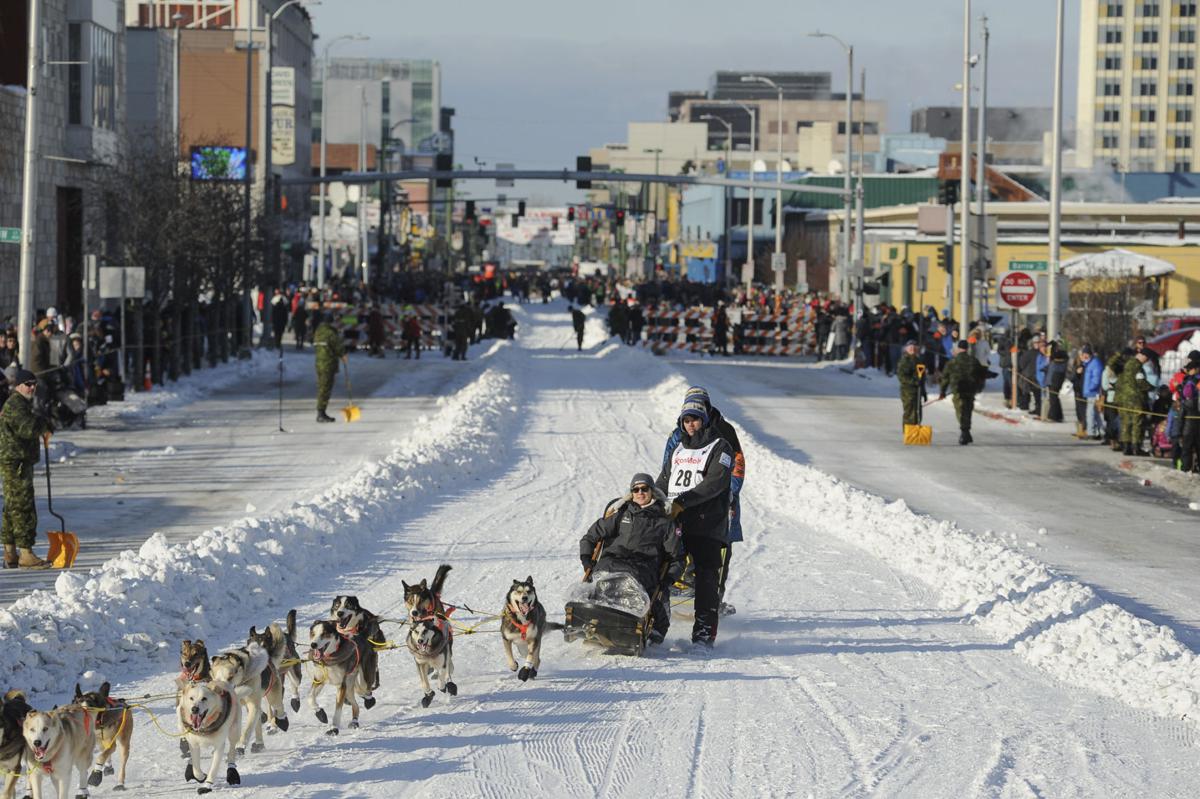The 2020 Iditarod sled dog race begins on the first Saturday in March. The annual 1,000-mile race through Alaska typically takes nine or 10 days to complete, but with the most snowfall upon Alaska in 21 years, the excess ground cover will slow down mushers and dogs. Will Peter Kaiser win in back-to-back years and secure victories? Can Aliy Zirkle finally win her first Iditarod after coming close with three, second-place finishes? Or will Joar Leifseth Ulsom, last year’s runner-up, win his second title since 2018?

The annual sled dog race passes through two mountain ranges. Mushers start with anywhere between 12 and 14 dogs. They can finish with a minimum of five dogs.
The $500,000 purse makes the Iditarod the richest dog sled race in the world. The winner typically wins approximately $50,000.
Pete Kaiser’s lead dog, Morrow, won the 2019 Golden Harness. Since 1977, mushers vote on the outstanding lead dog, with the winner earning a golden harness.
The Red Lantern Award goes to the last musher to cross the finish line. Victoria Hardick won the Red Lantern last year after taking 14 days, 22 hours, and 51 minutes to finish the 2019 Iditarod.
Since 1980, the Iditarod awarded the first musher to make it to the halfway point. The winner receives a bonus paid in gold nuggets to commemorate the Alaskan gold rush. Last year, Aliy Zirkle reached the halfway mark and won $3,000 worth of golden nuggets.
2020 Northern Route
A total of 57 mushers will begin the 2020 Iditarod in Anchorage on Saturday. Both men and women race against one another. The youngest musher is 23-years old, while the oldest is 79-years young. Four countries will be represented this year, including the US, Canada, Norway, and Denmark.
In even years, the Iditarod follows the Northern Course. In odd years, it follows the Southern Course.
The Northern Course has 24 checkpoints over 975 miles. The race restarts in Willow on Sunday. The first half of the race will pass through Yentna Station, Skwentna, Finger Lake, Rainy Pass, Ron, Nikolai, McGrath, Takotna, and Ophir before reaching Cripple. The back end of the race passes through Ruby, Galena, Nulato, Unalakleet, Shaktoolik, Koyuk, Elim, Golovin, White Mountain, Safety and Nome.
With an abundant snowfall in 2020, and more expected during the race, the race should take at least 10 days before the first musher crosses the finish line in Nome.
Another Multi-Musher Winner in Alaska?
At least six previous Iditarod champion mushers will start the 2020 Iditarod in Anchorage. Peter Kaiser, a construction worker and kennel owner in Bethel, Alaska, returns to defend his title after an inspiring victory in 2019. Lance Mackey, Martin Buser, Jeff King, Mitch Seavey, and Joar Leifseth Ulsom will also try to win another Iditarod. Mackey won four-straight in the late 2000s.
In 2012, Dallas Seavey became the youngest musher to win the Iditarod at 25-years old. He’d win it three more times during consecutive years in 2014 through 2016. His father, Mitch, beat him out in 2013.
Mitch Seavey, at age 56, became the oldest musher to win the Iditarod in 2013. He broke his own record in 2017.
Aliy Zirkle finished in second place three times. Zirkle was a runner-up against one of the Seaveys in 2012, 2013, and 2014.
Iditarod Champions (Since 2010)
2010 – Lance Mackey (8 days, 23 hours, 50 mins)
2011 – John Baker (8 days, 18 hours, 46 mins)
2012 – Dallas Seavey (9 days, 4 hours, 29 mins)
2013 – Mitch Seavey (9 days, 7 hours, 39 mins)
2014 – Dallas Seavey (8 days, 13 hours, 4 mins)
2015 – Dallas Seavey (8 days, 18 hours, 13 mins)
2016 – Dallas Seavey (8 days, 11 hours, 20 mins)
2017 – Mitch Seavey (8 days, 3 hours, 40 mins)
2018 – Joar Leidseth Ulsom (9 days, 12 hours, 0 mins)
2019 – Peter Kaiser (9 days, 12 hours, 39 mins)
In 2011, John Baker became the first Alaska native to win the Iditarod. At the time, he set the record for fastest time.
In 2017, Mitch Seavey set the new Iditarod record by completing the southern route in 8 days, 3 hours, and 40 minutes. The lack of snowfall over the last decade attributed to the fastest finishes in Iditarod history.
The slowest time occurred in 1974 when the Iditarod took 20 days and 15 hours before the winner, Carl Huntington, crossed the finish line.










